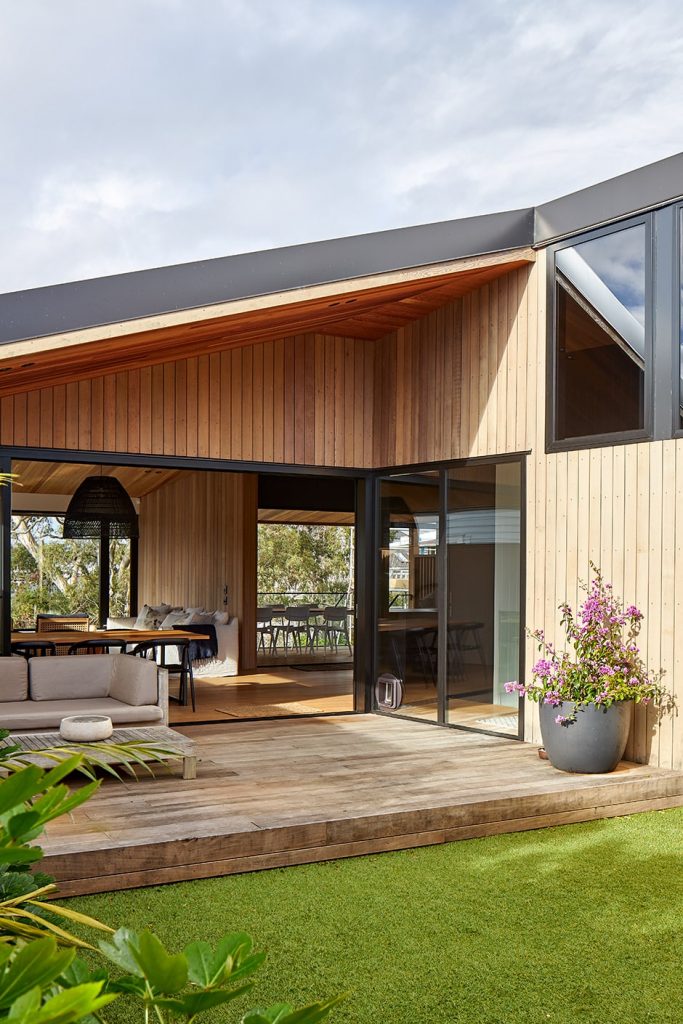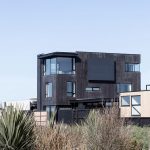The view from the street tells little of the family home hidden inside this project by Dorrington Atcheson Architects.
In association with First Windows & Doors.
In the central Auckland suburb of Westmere, a neighbourhood of tree-lined streets flanked by heritage bungalows and villas, the frontage of this family home by Tim Dorrington tells little of the laid-back lifestyle that plays out on the inside. A director at Dorrington Atcheson Architects, Tim has known homeowners Ginny and Dave Openshaw for a very long time, and while devising the plans for a new dwelling for them and their children Sam (12) and Sophie (9), the old friends spent many a night mulling over different forms, philosophies and references.
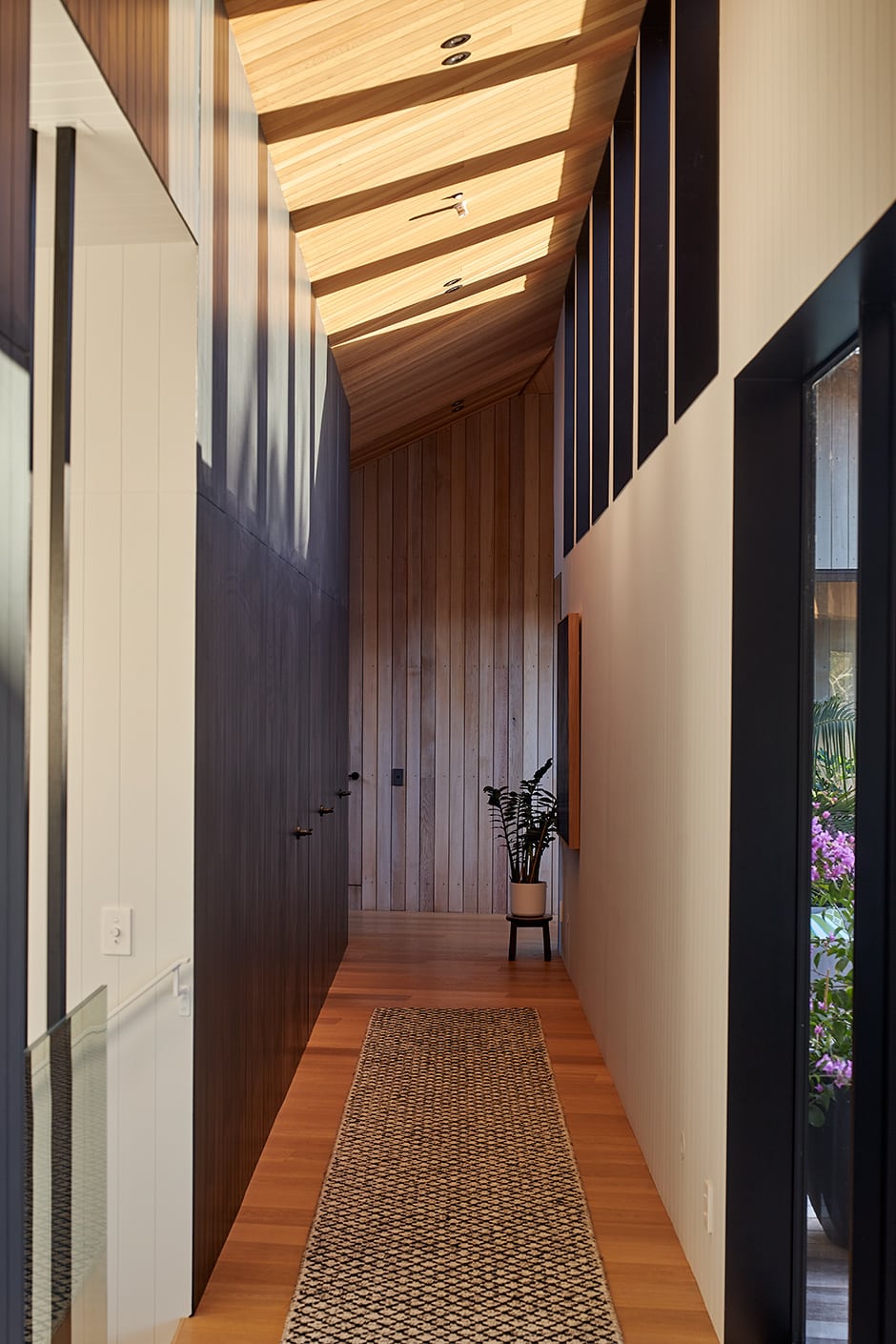
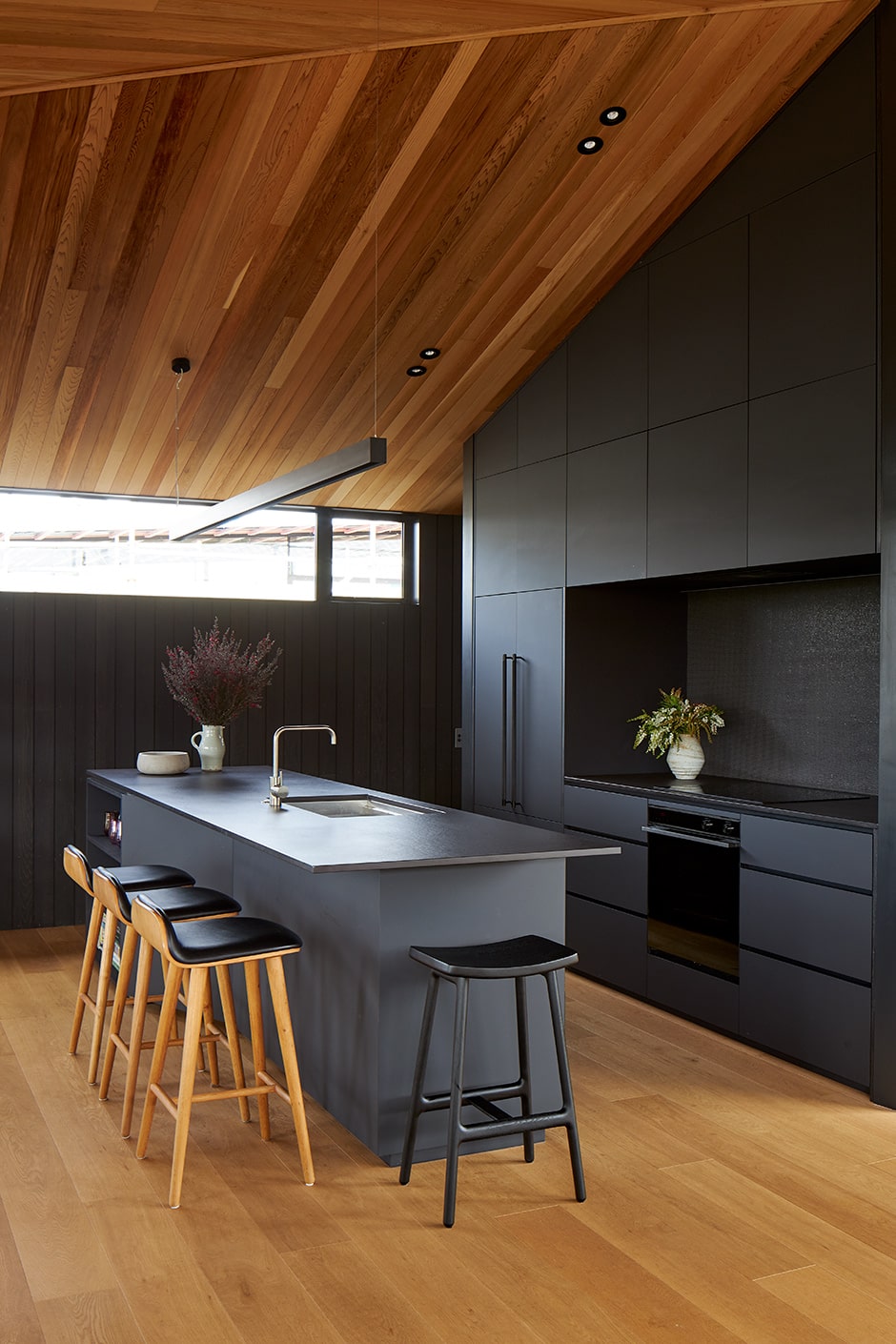
“Not to be un-neighbourly, but there’s no view out that way [to the street], so Dave and I came up with the idea of the ‘stealth bomber’ — we were trying to be secretive and wanted to create surprise when you come through the house,” says Tim of the inspired result of their discussions.
This goal to generate a sense of a reveal from the home’s entry was encouraged by the expansive view from the rear of the property out across the bordering reserve to the bay beyond. “You can’t see anything from the front door, then suddenly you see the courtyard, then the journey continues on down the hallway to the living area, where the view of the park opens up,” says Tim.

The first floor of the home is arranged in a dumbbell shape, with the entry, garage and main bedroom at one end, and open-plan kitchen, dining and living spaces at the other. They’re connected by a leafy courtyard that maximises light while maintaining privacy. Downstairs is Sam and Sophie’s domain — a kid-friendly hangout comprising two bedrooms and a bathroom on either side of a rumpus room, plus easy access to the backyard with its pool, spa, basketball hoop and path down to the park.

“Pseudo-intentionally, the main bedroom is at the furthest possible point from the kids’ spaces,” says Tim. This configuration results in the sort of sanctuary parents dream of, complete with an ensuite tiled in a soothing sage green and a glassed folly housing a single palm tree (“the world’s smallest courtyard”, Tim calls it) providing a sensory experience, particularly on rainy nights.
“Indoors and out, we look at windows as holes in walls or an absence of wall, but we’ve really tried to work with the absence of wall here,” says Tim of the overall strategy. Stacker sliding doors from the APL Architectural Series were specified in both the kitchen and dining areas, and “once they’re open, the deck becomes part of the kitchen and the courtyard becomes part of the dining — so you can really open up [those barriers]. Very few windows here are holes in walls as such — they’re all about trying to give you an experience that’s different to what a wall would, giving you facility to interact with the inside and outside.”
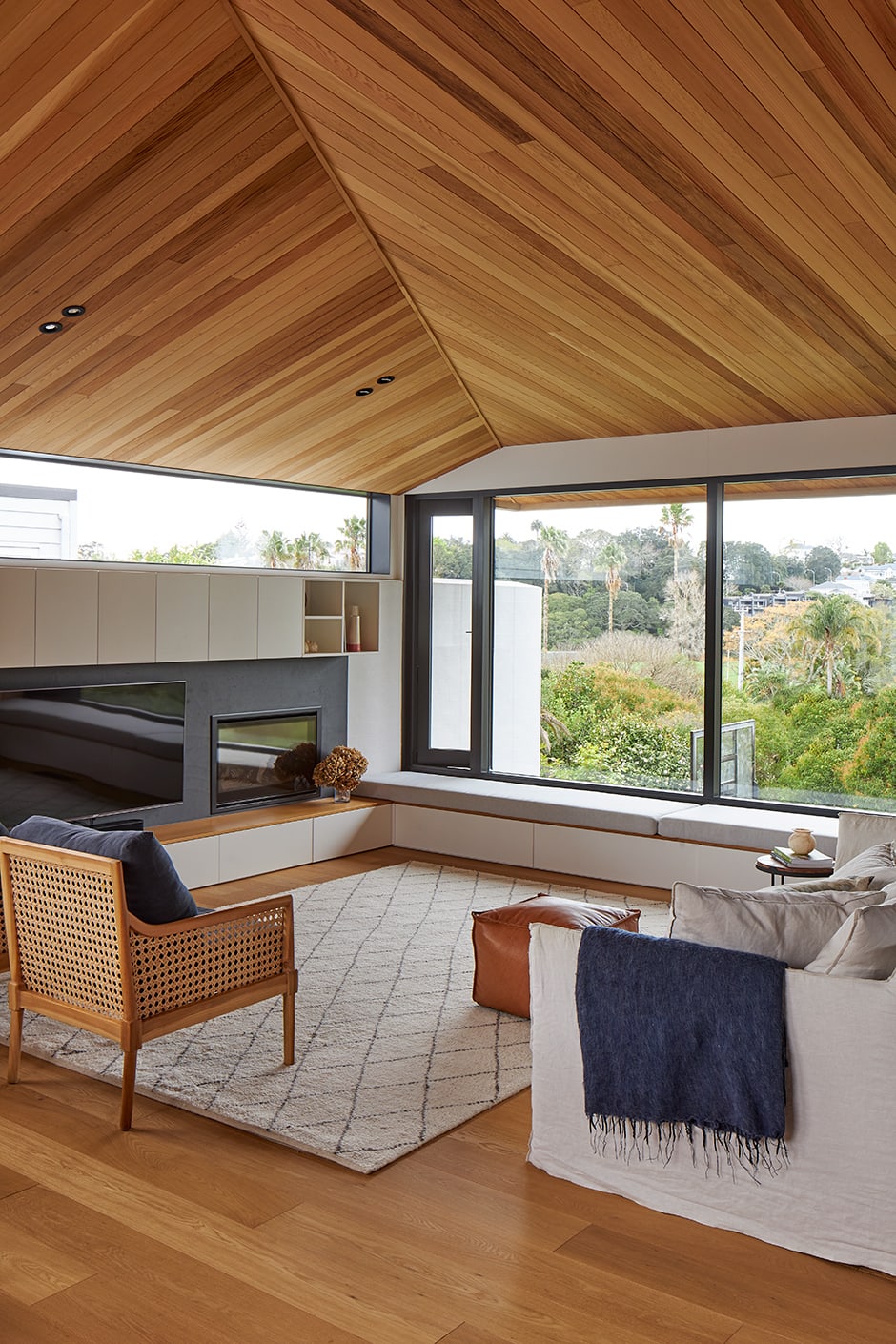

Transitions between spaces were considered as carefully as the rooms themselves in this house, with the hallway given special attention so it became gallery-like. A row of high, north-facing windows from First Windows & Doors’ Metro Series opens electronically, casting pleasingly orderly shadows over the black tongue-and-groove panelling that conceals the guest bedroom, guest bathroom and laundry.
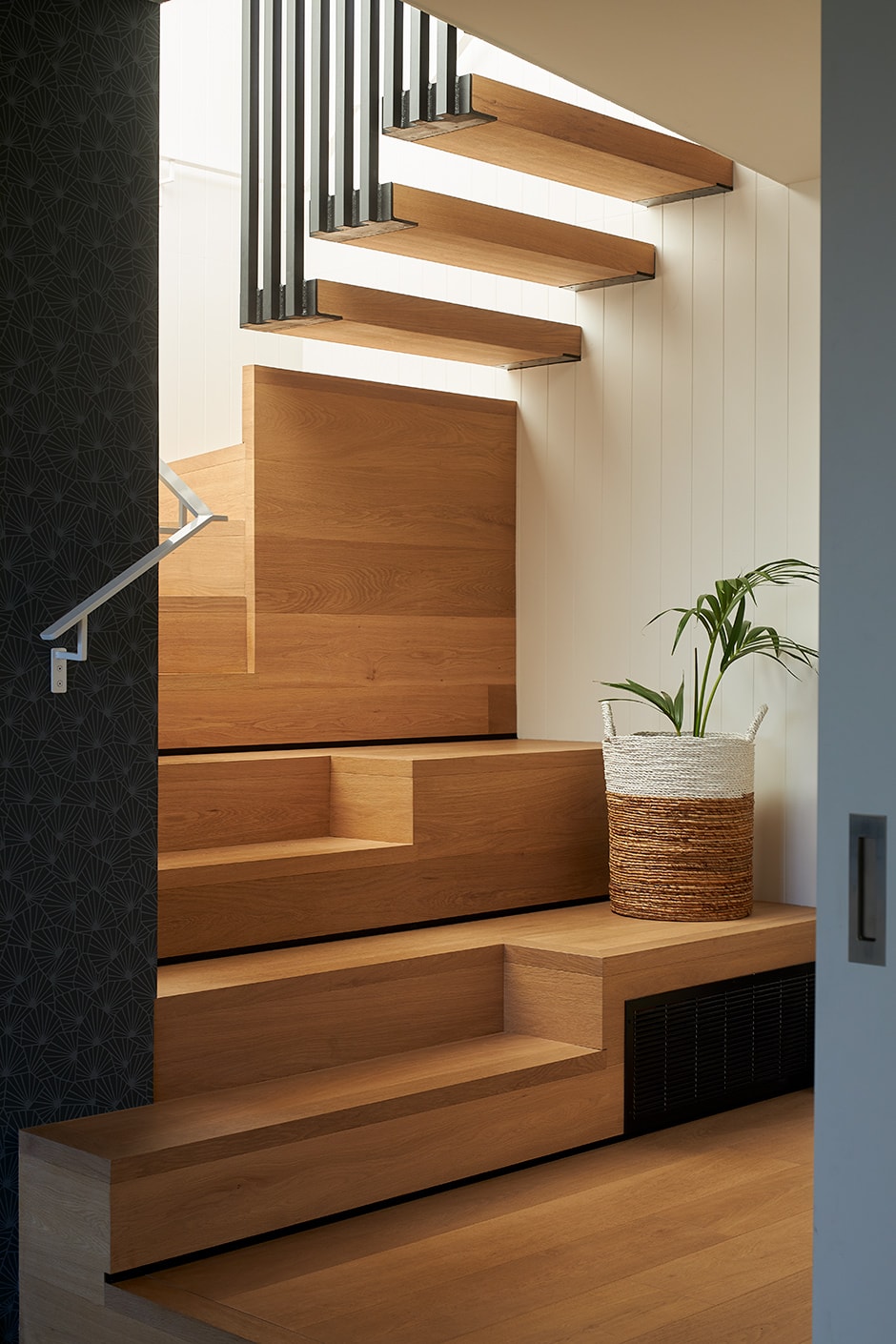
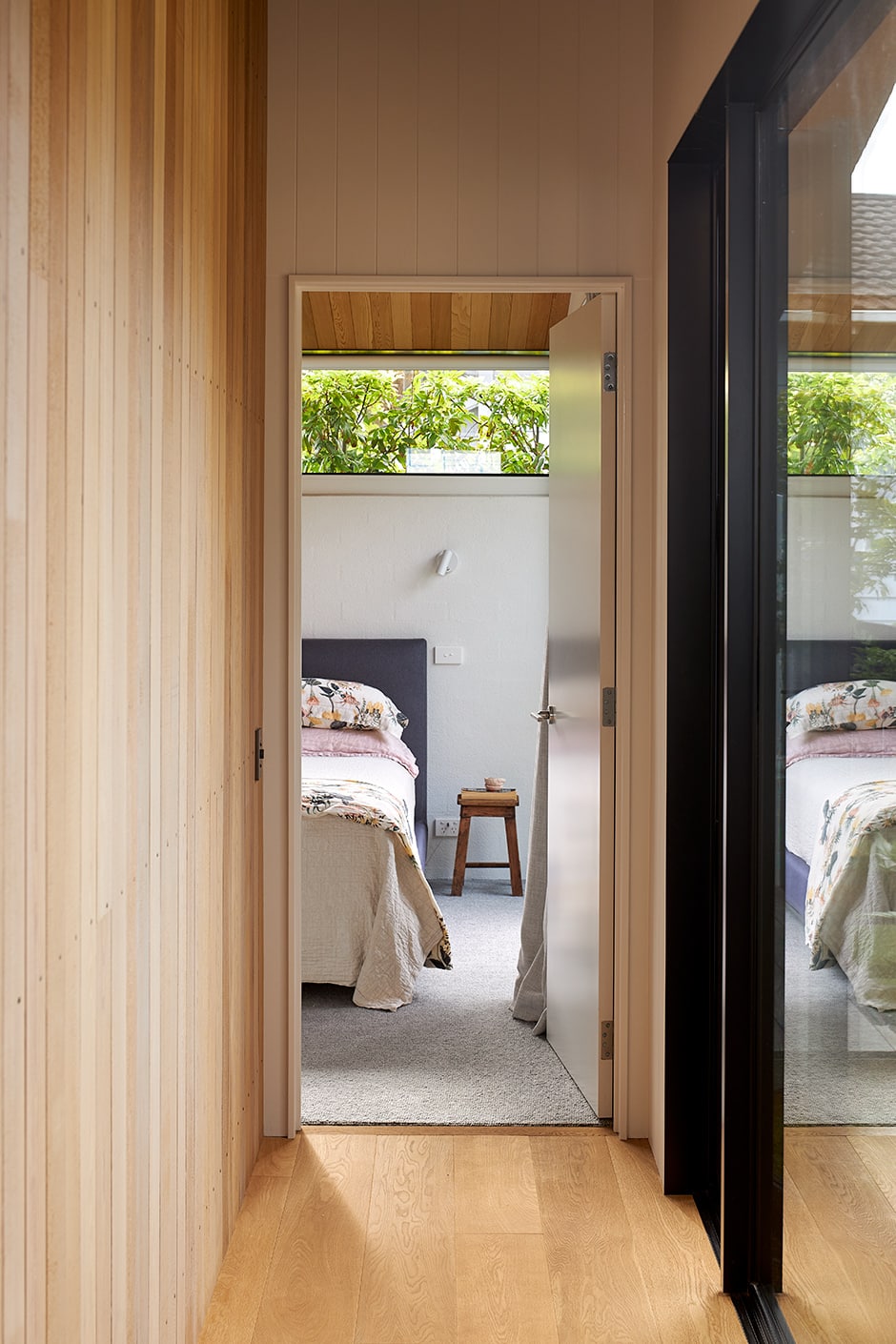
This black wedge of the hallway comes to an end in the dark-coloured kitchen, in which a splashback of mosaic tiles made from recycled computer parts adds a textural element to the minimalist scheme. The appliances are integrated, and a scullery is tucked out of sight to ensure the open-plan living spaces appear as uncluttered as possible.
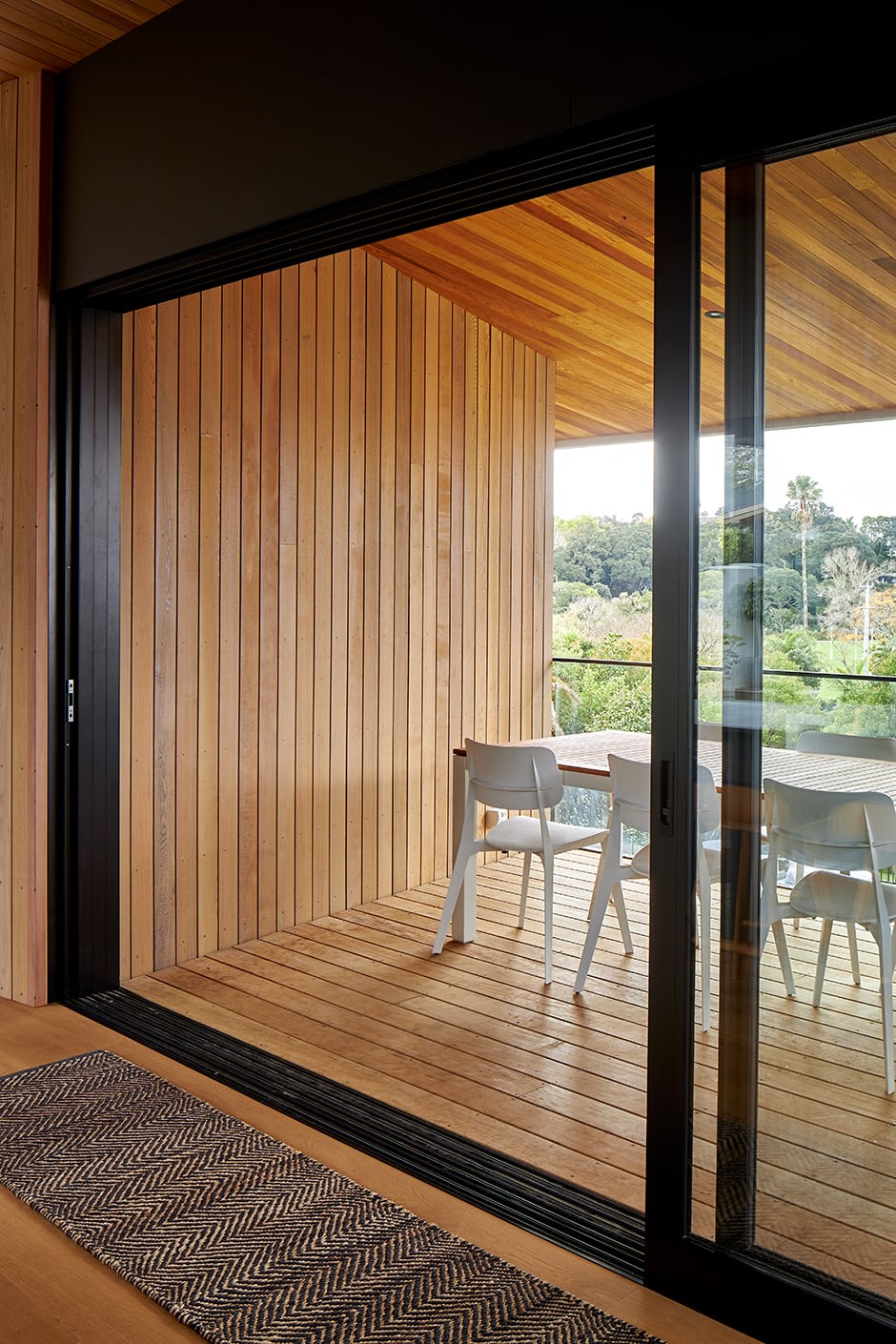
Bagged brick was used on the living area’s north-facing wall for both practical and textural effect. “We wanted something solid here, as you’re about 2m away from the neighbouring house,” says Tim. “But we also limited the height of the wall to three-quarters and placed horizontal slot windows above the brick, so you get the feeling of space. Because the windows are full length, it almost feels like there’s no wall, and with the built-in [seating and other elements] surrounding the living zone, you barely notice the wall.”
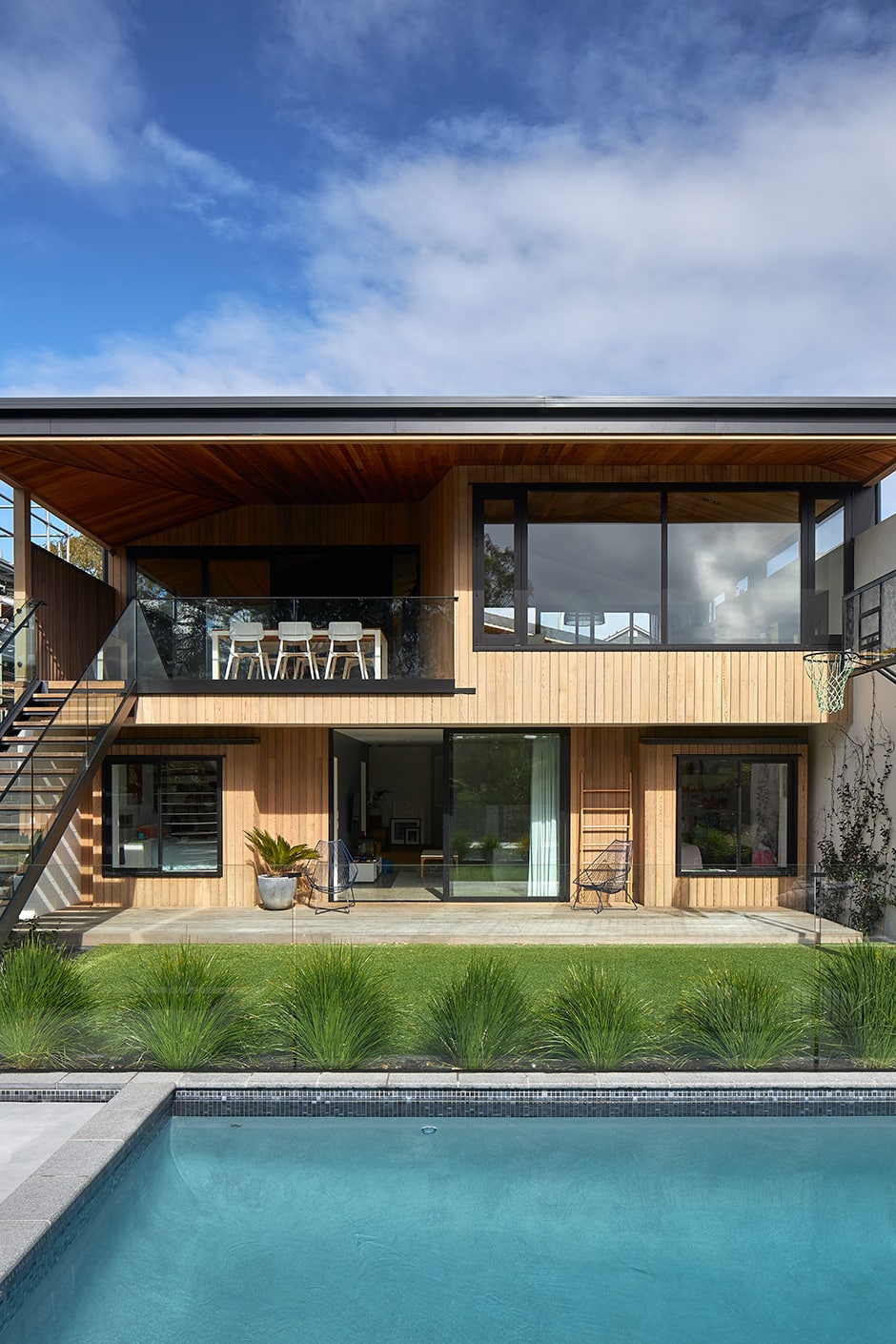
The vertical orientation of the home’s interior linings and the cedar-batten cladding on the exterior ensures a visually cohesive and succinct look, and adds detail to the angular walls ascending to vaulted cedar ceilings that accentuate the generous volume of the indoor and outdoor living spaces. These angles cleverly make these areas seem both bigger or smaller according to the ebb and flow of family life, providing spots in which to gather and others in which you can spirit yourself away to enjoy a sunny corner and a cuppa at any given time of the day.
Fit for life as the Openshaws know it right now, this is a home designed to accommodate the journey of raising a family. They’re not about to outgrow it anytime soon — their ‘stealth’ sanctuary that’s so much more than meets the eye.
firstwindows.co.nz
Words Alice Lines
Photography Simon Wilson

